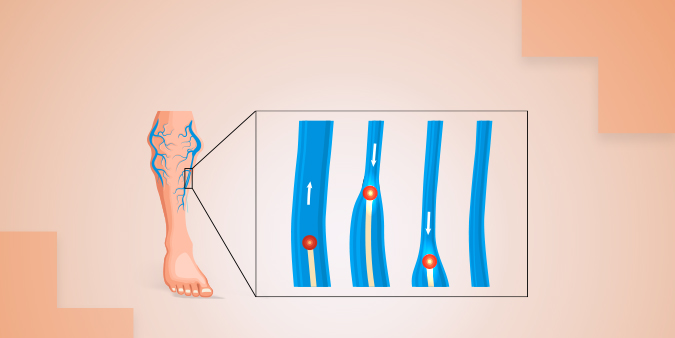
Understanding DVT Surgery: Steps, Risks, and Recovery
Thursday, 30th May 2024Deep Vein Thrombosis (DVT) is a serious condition that occurs when a blood clot forms in a deep vein, usually in the legs. If left untreated, DVT can lead to severe complications, including pulmonary embolism. In some cases, surgery may be necessary to remove the clot and prevent further issues. This guide provides an overview of DVT surgery, including the steps involved, potential risks, and recovery tips.
What is DVT?
Deep Vein Thrombosis (DVT) is the formation of a blood clot in a deep vein, typically in the legs. These clots can block blood flow, causing swelling, pain, and redness. If a part of the clot breaks off, it can travel to the lungs, causing a life-threatening pulmonary embolism.
When is DVT Surgery Needed?
Surgery for DVT may be necessary when:
- The clot is large and causing significant symptoms.
- The clot does not respond to anticoagulant medications.
- There is a risk of pulmonary embolism.
- There is a need to restore blood flow to prevent tissue damage.
Types of DVT Surgery
Thrombectomy
Thrombectomy involves the surgical removal of a blood clot from a vein. This procedure is usually done when the clot is large and causing severe symptoms.
Benefits:
- Immediate removal of the clot.
- Rapid symptom relief.
- Restoration of blood flow.
Risks:
- Bleeding.
- Infection.
- Damage to the blood vessel.
Catheter-Directed Thrombolysis
Catheter-Directed Thrombolysis is a minimally invasive procedure that uses a catheter to deliver clot-dissolving medication directly to the site of the clot.
Benefits:
- Minimally invasive.
- Effective for large clots.
- Lower risk of bleeding compared to systemic thrombolysis.
Risks:
- Bleeding.
- Infection.
Allergic reaction to the medication.
Inferior Vena Cava (IVC) Filter Placement An Inferior Vena Cava (IVC) Filter is a small device placed in the inferior vena cava (the large vein that carries blood from the lower body to the heart) to prevent clots from reaching the lungs.
Benefits:
- Prevents pulmonary embolism.
- Suitable for patients who cannot take anticoagulants.
Risks:
- Filter migration.
- Filter blockage.
- Long-term risk of DVT recurrence.
Preparing for DVT Surgery
Pre-Surgery Consultation
During your pre-surgery consultation, your doctor will:
- Review your medical history and current medications.
- Perform a physical examination and recommend imaging tests, such as ultrasound or CT scan.
- Discuss the type of surgery and what to expect.
- Provide specific instructions on how to prepare for surgery.
Pre-Surgery Instructions
To prepare for DVT surgery, you may need to:
- Stop Certain Medications: Follow your doctor’s advice on which medications to stop before surgery, such as blood thinners.
- Fasting: Avoid eating or drinking for a specified period before surgery if general anesthesia will be used.
- Arrange Transportation: Since you may be under anesthesia, arrange for someone to drive you home after the procedure.
- Plan for Recovery: Prepare your home for a comfortable recovery by setting up a rest area and ensuring you have essential supplies on hand.
What to Expect on the Day of Surgery
Before the Surgery
- Check-In: Arrive at the hospital or surgical center as instructed and check in for your procedure.
- Pre-Operative Prep: You will be prepped for surgery, which may include changing into a surgical gown and having an IV line started.
- Anesthesia: Depending on the procedure, you will receive local, regional, or general anesthesia to ensure you are comfortable during the surgery.
During the Surgery
The specifics of the surgery will depend on the type of procedure being performed. Generally, the steps include:
- Incision or Catheter Insertion: Small incisions are made to access the vein or insert the catheter.
- Clot Removal or Medication Delivery: The clot is removed, or clot-dissolving medication is delivered to the site of the clot.
- Closure: Incisions are closed with sutures or surgical glue, if necessary.
After the Surgery
- Recovery Room: You will be taken to a recovery room to wake up from anesthesia. Your vital signs will be monitored.
- Discharge: Depending on the surgery and your recovery, you may be able to go home the same day or may need to stay in the hospital overnight.
Recovery After DVT Surgery
Immediate Post-Surgery Care
- Pain Management: You will be given pain medication to manage any discomfort.
- Activity Restrictions: Avoid strenuous activities and heavy lifting for a specified period.
- Compression Stockings: You may need to wear compression stockings to help with blood flow and reduce swelling.
At Home
- Rest: Get plenty of rest and gradually increase your activity level as advised by your doctor.
- Hydration: Drink plenty of fluids to help with recovery.
- Wound Care: Keep the surgical site clean and dry. Follow your doctor’s instructions for wound care and dressing changes.
Follow-Up
- Appointments: Attend all scheduled follow-up appointments to monitor your recovery and address any concerns.
- Symptoms: Contact your doctor if you experience severe pain, fever, increased swelling, or signs of infection at the surgical site.
Long-Term Recovery
- Monitor Symptoms: Pay attention to changes in your legs and report any new or worsening symptoms to your doctor.
- Resume Normal Activities: Follow your doctor’s advice on when to resume normal activities, including work and exercise.
- Lifestyle Changes: Incorporate healthy lifestyle changes to maintain vein health, such as a balanced diet, regular exercise, and avoiding prolonged standing or sitting.
Conclusion
DVT surgery can provide significant relief for those suffering from deep vein thrombosis and its complications. Understanding the different types of surgery, what to expect during the procedure, and how to care for yourself during recovery can help ensure a smooth and successful outcome. If you are considering DVT surgery, consult with your healthcare provider to discuss your treatment options and take the first step towards healthier veins and improved well-being.


